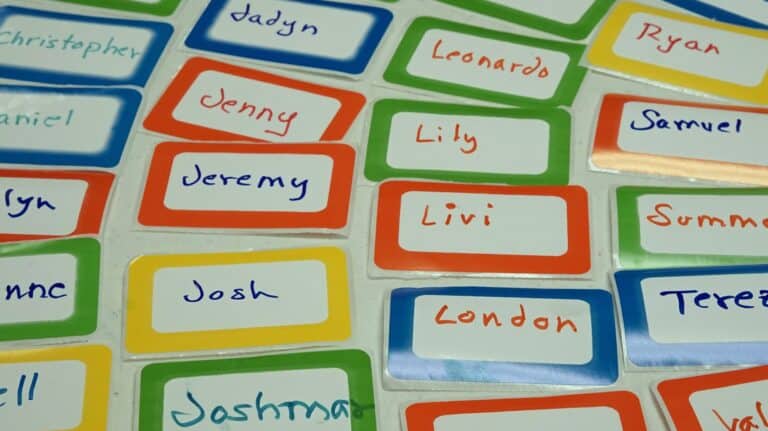We may receive a commission when you make a purchase from one of our links for products and services we recommend. As an Amazon Associate we earn from qualifying purchases. Thank you for support!
If you want to write a book that is impossible to put down, focus on writing powerful dialogue between your characters. Today we’ll share 6 important tips for how to write dialogue that will help you readers create a strong bond to your characters and your story.

What is Dialogue? Why is It Important?
Dialogue is the spoken word between the characters of your story.
Dialogue is the conversation between your characters and is what helps bring your characters to life.
Using dialogue in your book helps reduce “reader fatigue”. Reader fatigue can happen when you use too many long blocks of paragraph text. Dialogue is typically broken into short paragraphs no more than a sentence or two long.
This little break can help your readers stay engaged in the story.
However, dialogue has more purpose than merely making your work easier on the eyes! Well written dialogue keeps the plot moving, connects your readers to the characters, and makes the book memorable.
Think about some of your favorite books you’ve ever read – I bet you can think of some interesting words exchanged between the characters!
Learning how to write dialogue is not that difficult, and with practice you will find it can actually be a lot of fun while writing. As a writer, it gives you an opportunity to really let your characters come to life as they join in the conversation.
Here are our 6 best tips for writing dialogue:

Tip #1: Know Your Characters
When you know your characters inside and out, developing their unique voice in the conversation is much easier.
Answering character development questions can help you understand your characters in depth. While you may never write all the details into your story, it will help shape the voice of your characters.
When your characters are well developed, it is easy and natural to know what they might say in any given situation. This makes your job as a writer a lot easier! It will also help your audience connect with your characters as well.
Tip #2: Give Your Dialogue a Purpose
When characters speak, it better be for a good reason. If you listen to everyday conversations between people, it can be pretty boring and mundane without any real purpose.
Avoid small talk between your characters, as this will most likely only bore your readers, and not really give much insight into the character’s personalities. Just as you don’t expect to learn a lot about someone in a real life conversation of small talk, you can’t expect your readers to form an instant bond to your characters from a dialogue that doesn’t have a purpose.
Your readers aren’t going to feel very close to your characters if the dialogue does not go deeper into the depths of their minds, personalities and motives.
You want to make sure when writing that every word your characters say has a clear reason for being said. If the dialogue exchange between two characters isn’t necessary, think about revising the scene so what they talk about builds anticipation or suspense.
Tip #3: Remember Dialogue is Not Always Realistic
One of the biggest mistakes writer’s make is adding to many “Ums and Ehs” and other common day expressons into the writing. Dialect is another thing to avoid, as it can be confusing and painful to read.
Pleasantries like “Hello” and “How are you?” can bore readers also. You want your dialogue to be fast paced and moving – you want to get straight to the action.
Another thing to remember when keeping dialogue realistic is to limit your use of profanity, slang, and stereotypes. Not only can this alienate readers, it can also make your book seem dated in a couple of years. If you’re in doubt, consider visiting the Urban Dictionary which has definitions and usage for a lot of common slang words.
If your word is in the Urban Dictionary, you may want to consider using a different word!
Tip #4: Understand That Boring Dialogue Tags are OK
In school we’re taught to use all kinds of different synonyms for the word “said”. However, studies have shown that readers will treat the word “said” as a period – they will not even notice it in use. If you write words that are longer and complicated it can lead to the reader becoming fatigued.
Stick with words like: asked, said, replied.
If it becomes repetitive, stop using them and break it up with sentences that use action. Remember you don’t always need to put them in every paragraph, especially if it’s clear who is speaking.
Tip #5: Keep Formatting and Punctuation Simple While Writing Dialogue
Want to turn your readers off fast? Write gigantic paragraphs of dialogue.
Break your dialogue up into short, concise sentences that get straight to the point. A paragraph when writing dialogue should never had more than 2-3 sentences.
Learning how to punctuate dialogue takes some practice, but there are all sorts of resources online to help you. Having a desk reference of grammar can be invaluable as a fiction writer.
Tip #6: Study and Practice to Learn How to Write Dialogue!
The more you study and practice writing dialogue, the more experience you will have. More experience in writing dialogue will help you naturally fit conversations into your stories.
Here are some ways you can study and practice writing dialogue:
- Read plays and screenplays.
- Watch movies or television shows.
- Read books with strong character development through dialogue.
- Search through GoodReads for quotes to help you find some interesting book choices.
- Pay attention to your own personal conversations and the conversations you overhear.
Most importantly, practice writing the conversations between your characters. Use writing prompts and exercises to stretch your creativity.
Dialogue Writing Resources
Below are some of my favorite books on writing dialogue tips – a great addition to your writer’s library.
[sc name=”Amazon Disclaimer”]
Do you have any tips to share for how to write dialogue in your short stories and novels? We’d love to hear your ideas, experiences and suggestions in the comments below!







Well this was certainly helpful.
This was quite helpful. I often find myself trying to replace “said”, but I suppose it makes sense that the reader treats the word like a period. Thinking back, I don’t remember reading a book where it was overused; I don’t even remember seeing it in any book. I guess the mind glosses over it.
When I have over 4 lines of ongoing dialogue, I like to break it with action to show what the character is doing as they speak.
An example:
“I’m not leaving.” Sarah crosses her arms over her chest in what she must think is a defiant pose. “Daddy said he’s coming to get me.”
I stifle a groan. “Now is not the time for this, young lady!” I give her a stern look and point towards the blue minivan, “To the car. Now!”
I find that it makes the conversation more (…what’s the word?) colorful…
I digress. This was a very helpful article. Thanks 🙂